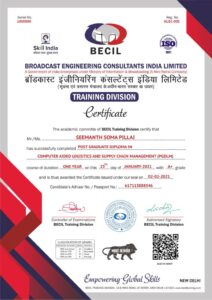
GOVERNMENT CERTIFICATION
- Central Government Certification For Data Science Program.
- BECIL – A Govt. of India Enterprise under Ministry of Information & Broadcasting
- Certification Valid For Private And Government Jobs Also In More Than 82 Countries.
- Applicable As Per State Vise Government Placements.


